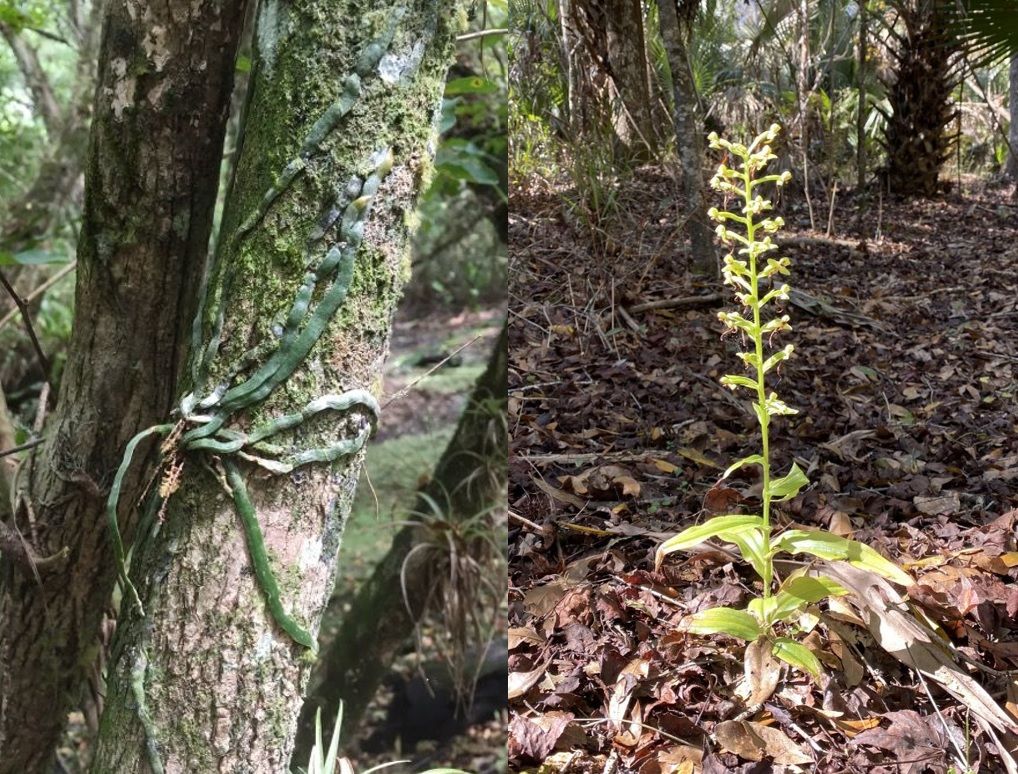By land and by tree: Pollinator taxa diversity of terrestrial and epiphytic orchids
DOI:
https://doi.org/10.26786/1920-7603(2022)671Keywords:
Orchidaceae, epiphyte, terrestrial, bipartite, species interaction websAbstract
There are approximately 30,000 species in the family Orchidaceae, with some species growing terrestrially and others growing as epiphytes. Though the pollination biology of many of these species is not well known, there has been a diversity of taxa recorded as orchid pollinators. Insects, birds, and even a record of a mammal species have been documented as successful pollinators, while some orchids are able to reproduce without the use of a pollen vector. The goal of this review is to provide an overview of orchid pollination tactics, with references to more specific studies of each, and to analyze a large subset of publications to determine differences in pollinator taxa and specificity between epiphytic and terrestrial orchid genera.
This review examines pollination data from over 400 orchid species, including 74 epiphytic and 83 terrestrial orchid genera. Two pollinator taxa, Coleoptera and Hymenoptera (Class: Insecta), were found to pollinate significantly more terrestrial than epiphytic orchid genera, while other taxa showed no significant differences. Hymenoptera were the dominant taxa of pollinator in regards to the overall number of species recorded; however, based on species interaction webs that were built, the Lepidoptera (Class: Insecta) have stronger interactions with the orchid species they pollinate, suggesting a more specific relationship between the two.

Downloads
Additional Files
Published
How to Cite
Issue
Section
License
Copyright (c) 2022 Haleigh Ray, Jennifer Gillett-Kaufman

This work is licensed under a Creative Commons Attribution 4.0 International License.
JPE is an open access journal which means that all content is freely available without charge to the user or his/her institution.
Authors who publish with this journal agree to the following terms:
1) Authors retain copyright and grant the journal right of first publication with the work simultaneously licensed under a Creative Commons Attribution License that allows others to share the work with an acknowledgement of the work's authorship and initial publication in this journal.
2) Authors are able to enter into separate, additional contractual arrangements for the non-exclusive distribution of the journal's published version of the work (e.g., post it to an institutional repository or publish it in a book), with an acknowledgement of its initial publication in this journal.
3) Authors are permitted and encouraged to post their work online (e.g., in institutional repositories or on their website) prior to and during the submission process, as it can lead to productive exchanges, as well as earlier and greater citation of published work (See The Effect of Open Access).
To assure a broader targeted audience, content will be included into databases (such as EBSCO) and directories (such as DOAJ).











